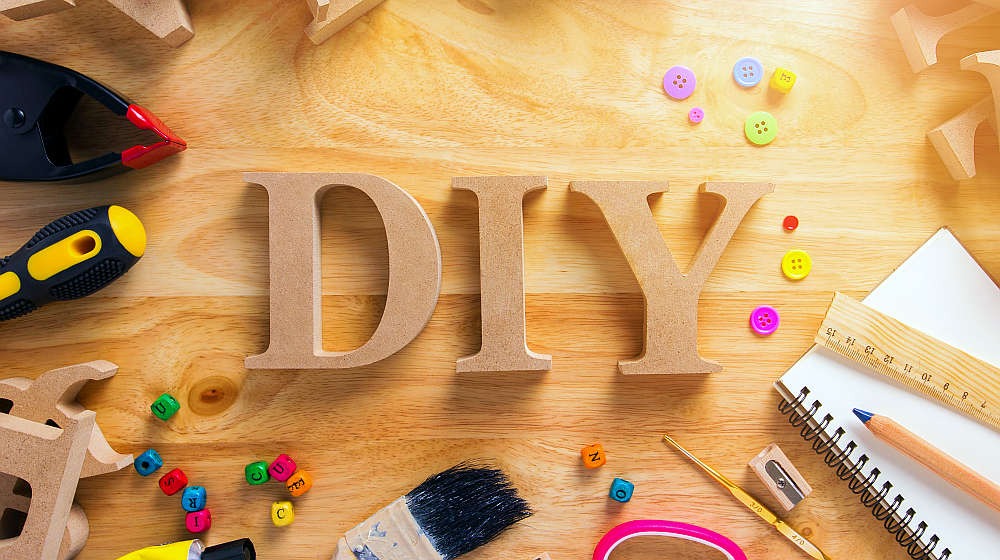Introduction: The Power of DIY
Do-It-Yourself, commonly known as DIY, is a term that refers to the practice of creating or repairing things without the direct assistance of experts or professionals. This approach encourages individuals to use their creativity, resourcefulness, and hands-on skills to accomplish tasks independently. Whether you’re fixing something broken at home, building a custom piece of furniture, or creating a personalized gift, DIY projects are not only cost-effective but also provide a sense of accomplishment and self-sufficiency.
In recent years, DIY culture has seen a resurgence, largely driven by the accessibility of tutorials and ideas through online platforms. The rise of Pinterest, YouTube, and various DIY blogs has made it easier than ever for people to explore and execute their own projects. But DIY is not just about saving money; it’s about cultivating a mindset of independence, problem-solving, and creativity. In this article, we’ll delve into the benefits, tools, and essential tips for embracing the DIY lifestyle.
The Benefits of DIY
- Empowerment and Confidence
Engaging in DIY projects fosters a sense of achievement. Completing a project from start to finish boosts self-esteem and encourages further experimentation. Whether it’s assembling a bookshelf or building a vegetable garden, the skills learned and the confidence gained carry over to various other aspects of life. - Cost Savings
DIY allows individuals to bypass the high costs associated with hiring professionals or purchasing expensive pre-made items. For example, crafting your own home décor or designing a customized outfit can save a substantial amount of money. - Personalization and Creativity
A major advantage of DIY projects is the ability to personalize the end product. You have full control over the design, style, and materials used, ensuring that the result is uniquely yours. This customization allows you to infuse your personality and creative flair into every item you make. - Sustainability
Many DIY projects focus on upcycling or reusing materials that would otherwise go to waste. By repurposing old furniture, clothing, or household items, you can contribute to sustainability efforts and reduce your environmental footprint.
Common DIY Projects
- Home Improvement
DIY home improvement projects are incredibly popular and can range from painting a room to constructing a new deck. Simple tasks like patching up drywall or installing new light fixtures are perfect for beginners, while larger projects such as remodeling a kitchen or bathroom can be tackled with the help of online guides. - Furniture Making
Building custom furniture allows you to create pieces that fit perfectly in your home. For example, a reclaimed wood coffee table, a DIY bookshelf, or even a bed frame can be crafted with a few basic tools and materials. - Gardening and Landscaping
Many DIY enthusiasts turn to gardening as a way to personalize their outdoor spaces. Growing your own vegetables, building raised garden beds, or constructing a stone pathway are all achievable projects that can transform your backyard.
Essential Tools for DIY Projects
Having the right tools is crucial for ensuring your DIY projects are successful. While some projects may require a comprehensive toolset, others only need a few essentials:
- Hammer and Nails
These basic tools are a staple in almost every DIY project, from building furniture to hanging artwork. - Screwdrivers
Both manual and electric screwdrivers are important for assembling furniture and installing fixtures. - Measuring Tape and Level
Accurate measurements are vital for achieving professional-looking results. A measuring tape and level will help ensure your projects are properly aligned. - Drill
A versatile power tool, a drill can be used for everything from drilling holes to driving screws.
Tips for DIY Success
- Start Small
If you’re new to DIY, start with simple projects like making your own candles, building a small shelf, or crafting a picture frame. Once you’ve gained experience, you can gradually move on to more complex tasks. - Do Your Research
Before diving into a project, take time to research tutorials, tips, and safety precautions. There are plenty of free resources available online that can guide you through the steps. - Measure Twice, Cut Once
Accurate measurements are key to the success of any DIY project. Always double-check your measurements before cutting or assembling any materials. - Be Patient
DIY projects can take time and effort. Don’t rush through them enjoy the process and embrace the learning experience.
Conclusion
DIY is more than just a way to create and repair it’s a mindset that empowers individuals to take charge of their surroundings and live more sustainably. Whether you’re fixing a broken chair or building a new home, the satisfaction of completing a project with your own hands is unparalleled. So, pick up your tools and start creating today!
